But sadly, communities often make landscaping choices that are harmful — or at least not helpful — in our public spaces, too.
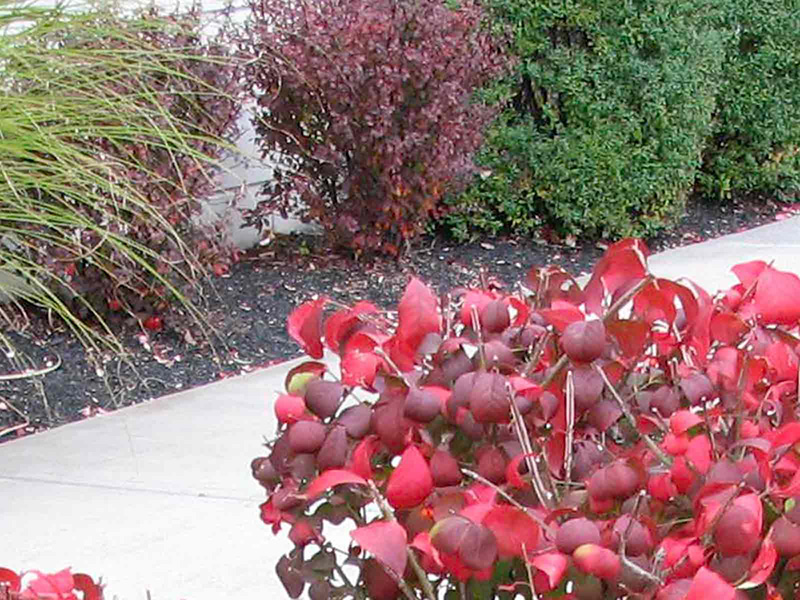
Here’s an example of a local shopping center with its usual non-native landscaping, in this case both Japanese barberry and burning bush.
But sadly, communities often make landscaping choices that are harmful — or at least not helpful — in our public spaces, too.
A local example
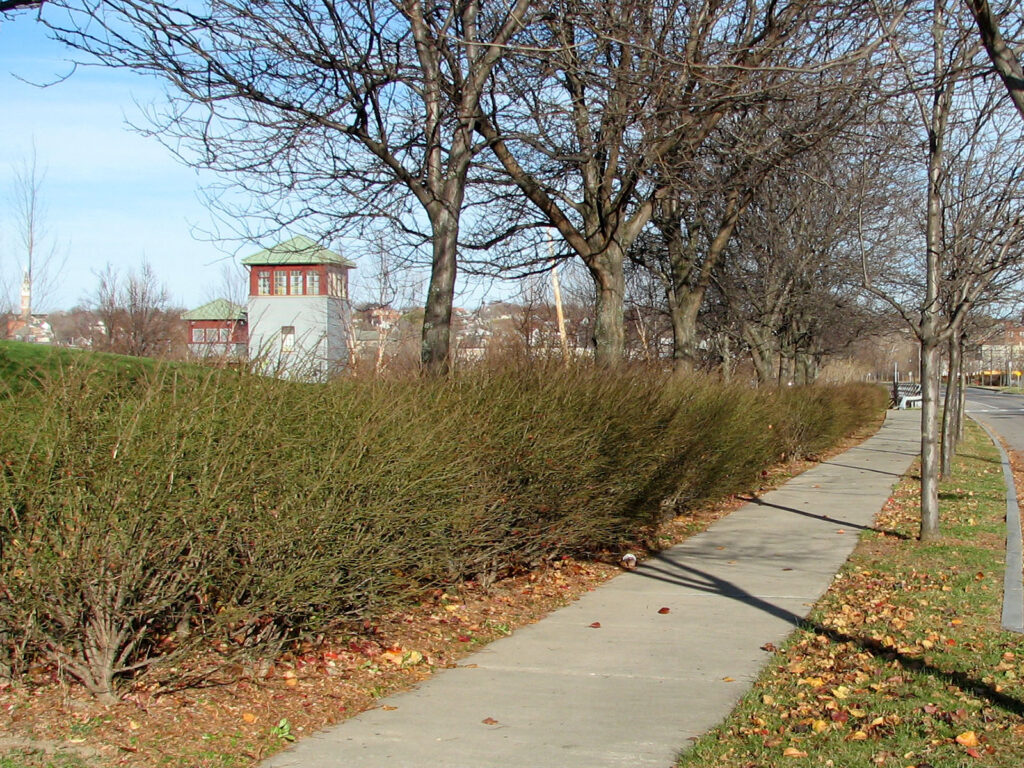
One noticeable example is in our Syracuse Inner Harbor area. It’s filled to the gills with the invasive burning bush.
I’ve never seen so many burning bushes in one spot!
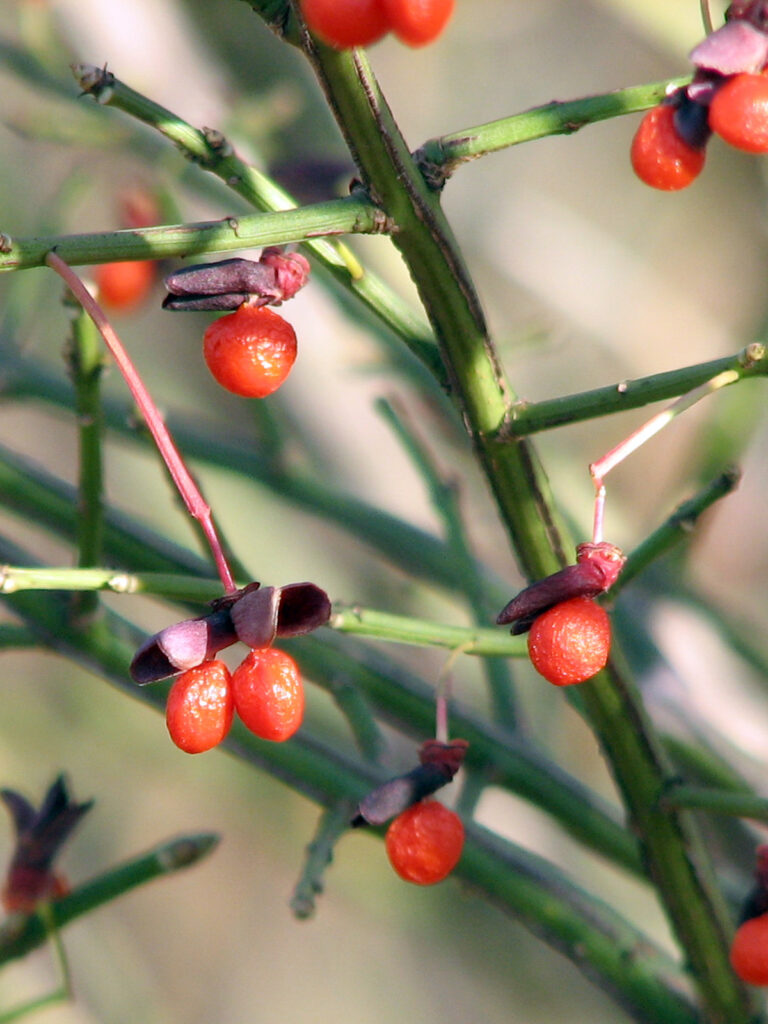
They’re full of berries, ready for birds to spread them far afield. What a disaster!
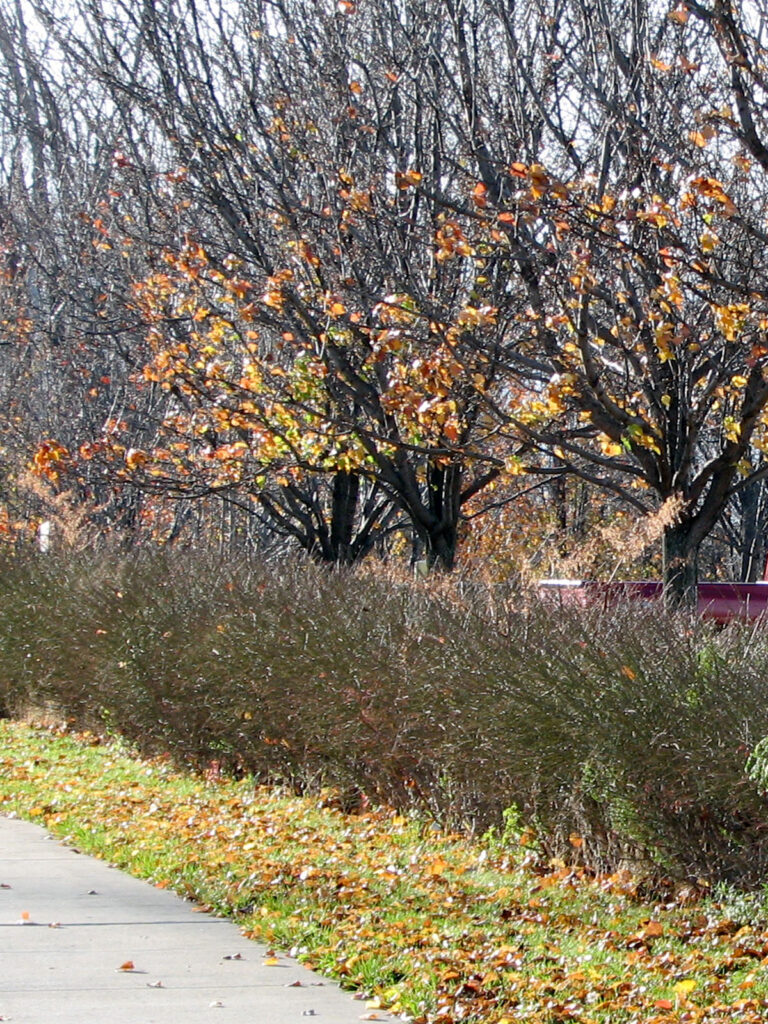
To complete the disaster, they’ve planted rows of also-invasive Bradford pears!
A good example turned bad
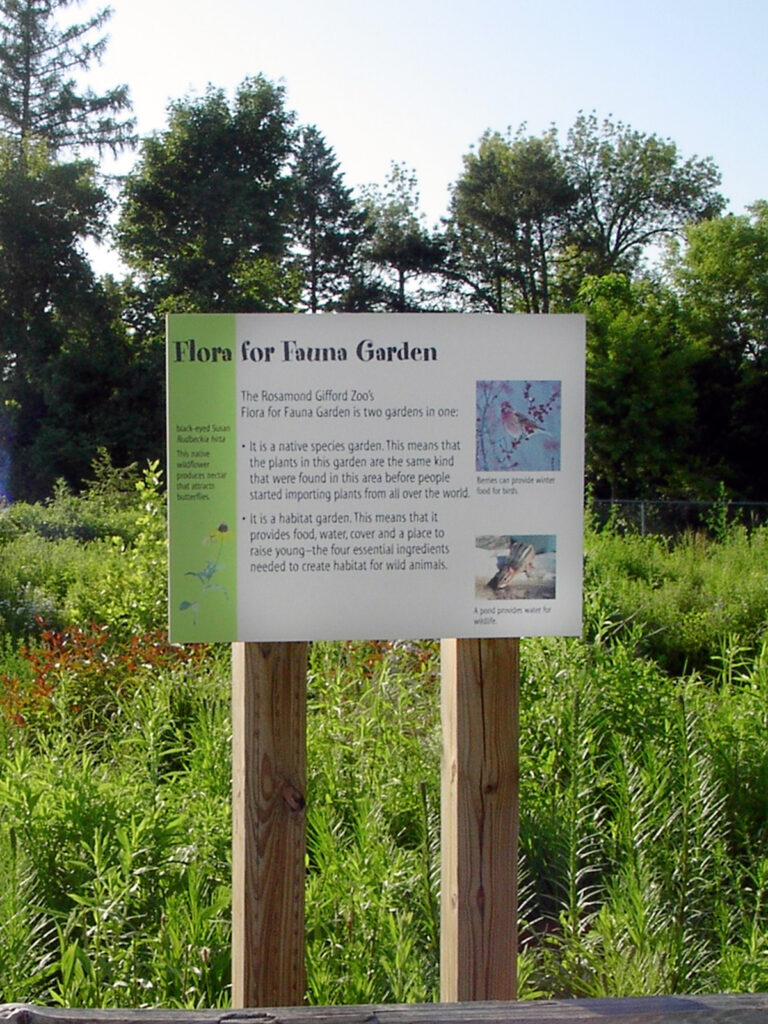
A good example of habitat in a community space was the “Flora for Fauna” habitat garden at our local zoo. The zoo’s habitat garden was quite large, with paths throughout and informative signage.
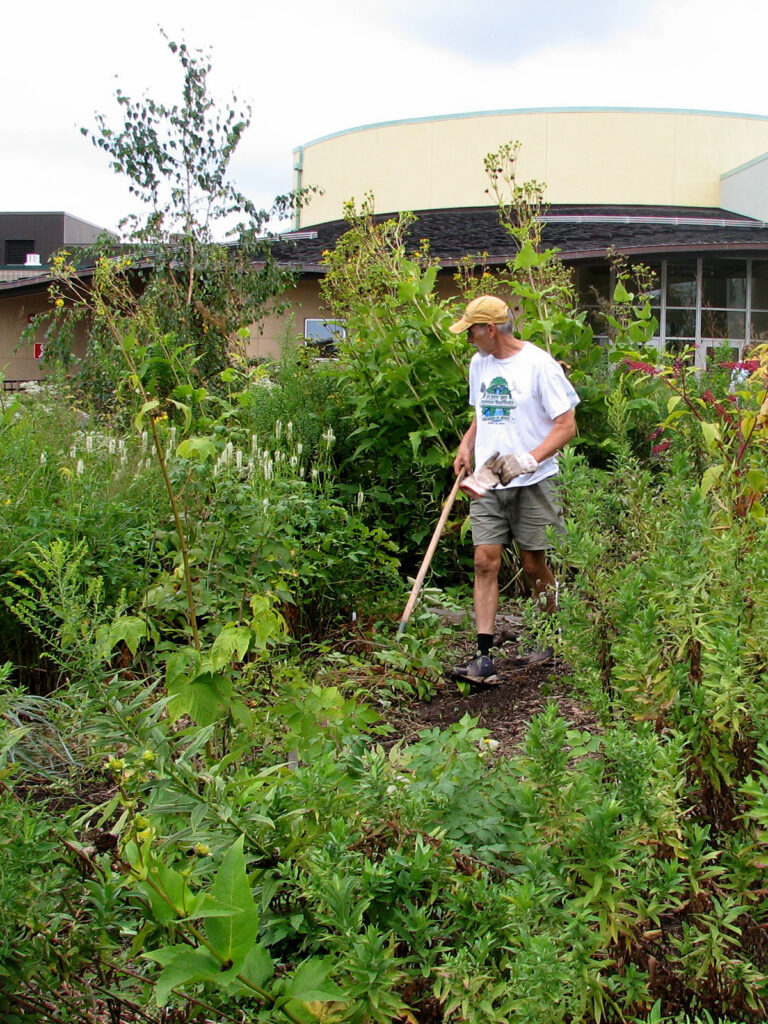
Many people worked for many years to plan this garden that featured plants native to Central New York and to eliminate those non-native plants that had been planted there over the years.
The difference was immediate. Soon after planting these natives, people noticed birds arriving to eat serviceberries, butterflies arriving to feed on nectar. The garden supported life!
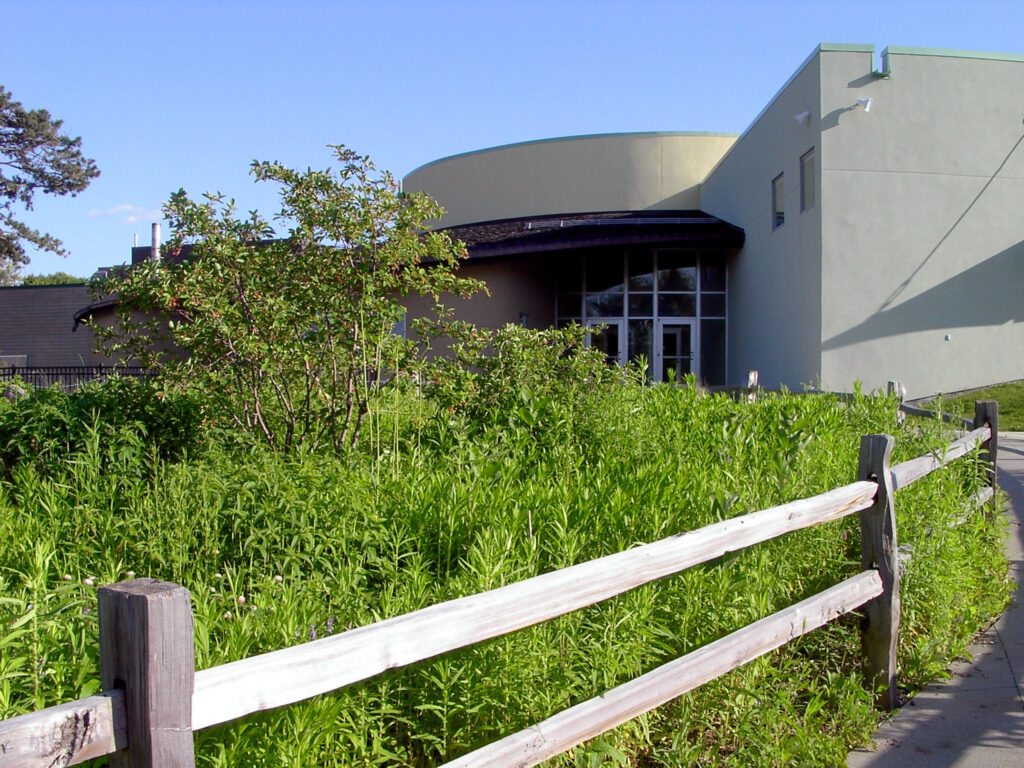
The zoo had been an especially appropriate match for this garden since it could connect the zoo’s goal of participating in global biodiversity efforts with providing habitat for local creatures and biodiversity.
The location of the habitat garden was also appropriate. It was the first thing people saw as they entered, setting the stage for thinking about the importance of habitat. After learning about the importance of habitat around the world for the zoo’s creatures’ original home, people had left the zoo, passing by the habitat garden that powerfully demonstrated what they can do in their own yard for our own native creatures.
The zoo’s habitat garden was also a good example of the challenges public gardens face. Even though in time it will be somewhat self-sustaining, a natural landscape needs maintenance, especially in the early years.
This is true of any new landscape, of course, but landscapes in the public eye on public land face additional pressures. Many people still prefer the “neat” look of closely mowed lawn surrounded by a few neatly trimmed shrubs. What looks like a more unruly landscape can draw comments, and public officials are sensitive to such comments.
BAD NEWS
They bulldozed this landscape to create a new entrance to the building! This destroyed landscape joins an expensive rain garden in a CNY suburb, a local library landscape, a local school garden, and other attempts to provide an alternative to the conventional sterile landscapes so common everywhere.
The future of public landscapes
The good news is that people are beginning — too slowly for sure — to realize that conventional ornamental landscapes are no longer feasible. They’re just too destructive for a number of reasons.
And if people don’t understand the environmental consequences, almost everyone understands the financial consequences. Maintaining traditional landscapes are too time-consuming and resource-intensive and therefore expensive. Surely not a good use of the public’s money!
A combination of intelligent maintenance and public education about the reasons for the different “look” of a natural landscape (as well as the financial savings!) are important.
Resources
- Native Plant Trust:
- Beyond Pesticides:
- Tools for Change – how to organize your community against pesticide use, discover concrete examples of local IPM strategies, review examples of pesticide free parks, understand legislation, and take note of personal testimonies.
- Humane Gardener:
- Butterflies: 1; Bullies: 0 – describes new law that “specifically codifies your right to be wildlife-friendly, plant-friendly, and environmentally conscious.”
- Good News:
